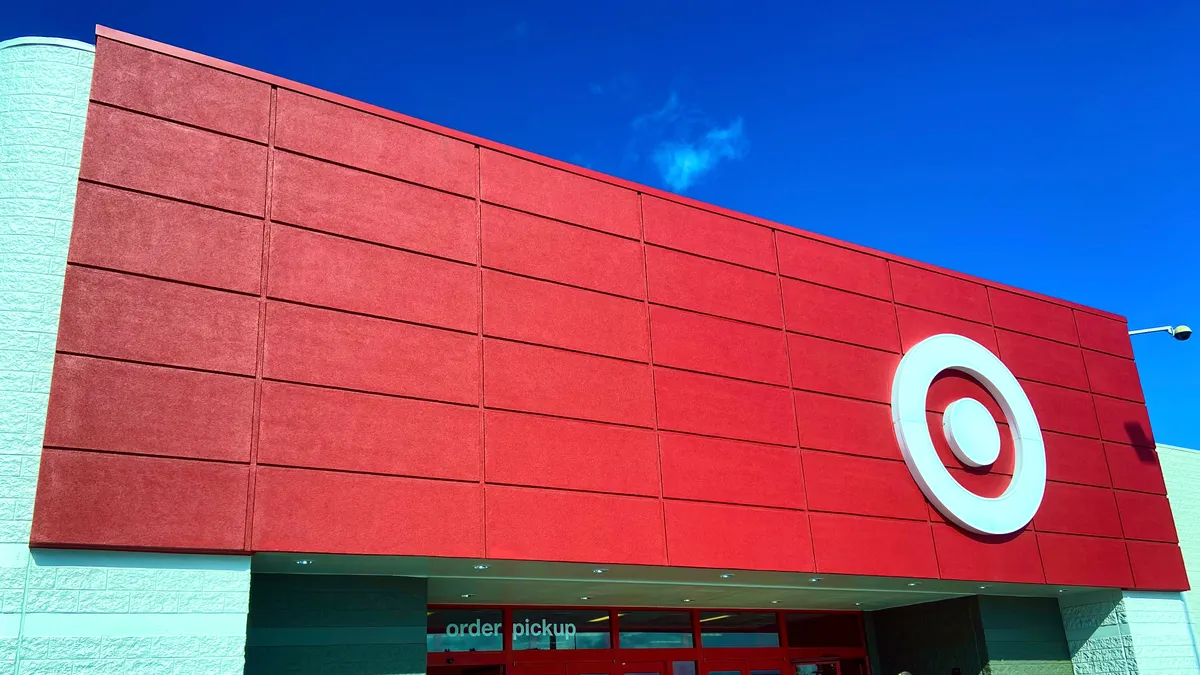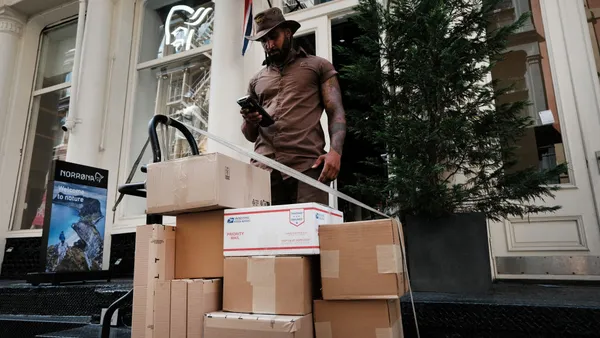Dive Brief:
- Target has expanded its last-mile reach in the Atlanta area with an "extension" facility that is helping deliver up to 1,500 packages daily, the retailer said on its website last week.
- Packages are transferred to the Smyrna, Georgia, facility from Target's Atlanta sortation center if the destination falls outside the center's delivery area. Drivers with Target's Shipt subsidiary then provide delivery to customers.
- Target said it plans to ramp up the facility's activity in the coming months and will review expansion plans for these types of facilities — which it calls Target Last Mile Delivery extensions — as it continues to expand its next-day delivery reach.
Dive Insight:
Target opened the extension facility, the company's first, in May as a new wrinkle to its "stores as hubs strategy," which leverages the retailer's physical footprint for speedy home delivery.
In that strategy, when a customer places an order, a local store employee picks and packs the ordered products to be sent to an area sortation center. The order is offloaded, sorted and batched with other packages to be delivered to nearby neighborhoods.
However, if that order isn't going to a location within the sortation center's delivery area, it will be transferred to an extension facility where available. In the Atlanta market, this has allowed Target to reach 500,000 additional customers for next-day delivery with marginal added costs compared to a full-size sortation center.
"These facilities are a continuation of our innovative efforts to serve millions of guests and reach millions more, while maximizing speed, efficiency and care across our real estate portfolio," EVP and COO John Mulligan said in a statement.
Extension facilities provide Target with various benefits beyond reaching more customers, John McClymont, director of operations strategy and continuous process improvement at Brink’s, said in a LinkedIn post. They include lower intra-network transportation costs, better inventory control and the ability to keep more expensive technology in more centralized locations.
"By keeping more complexity at a larger regional hub, they are able to take high sorted and segmented products and quickly push them out for delivery," McClymont said. "A fast paced, lower tech cross dock operation that immediately gives improved access and speed of delivery to hundreds of thousands of customers."














